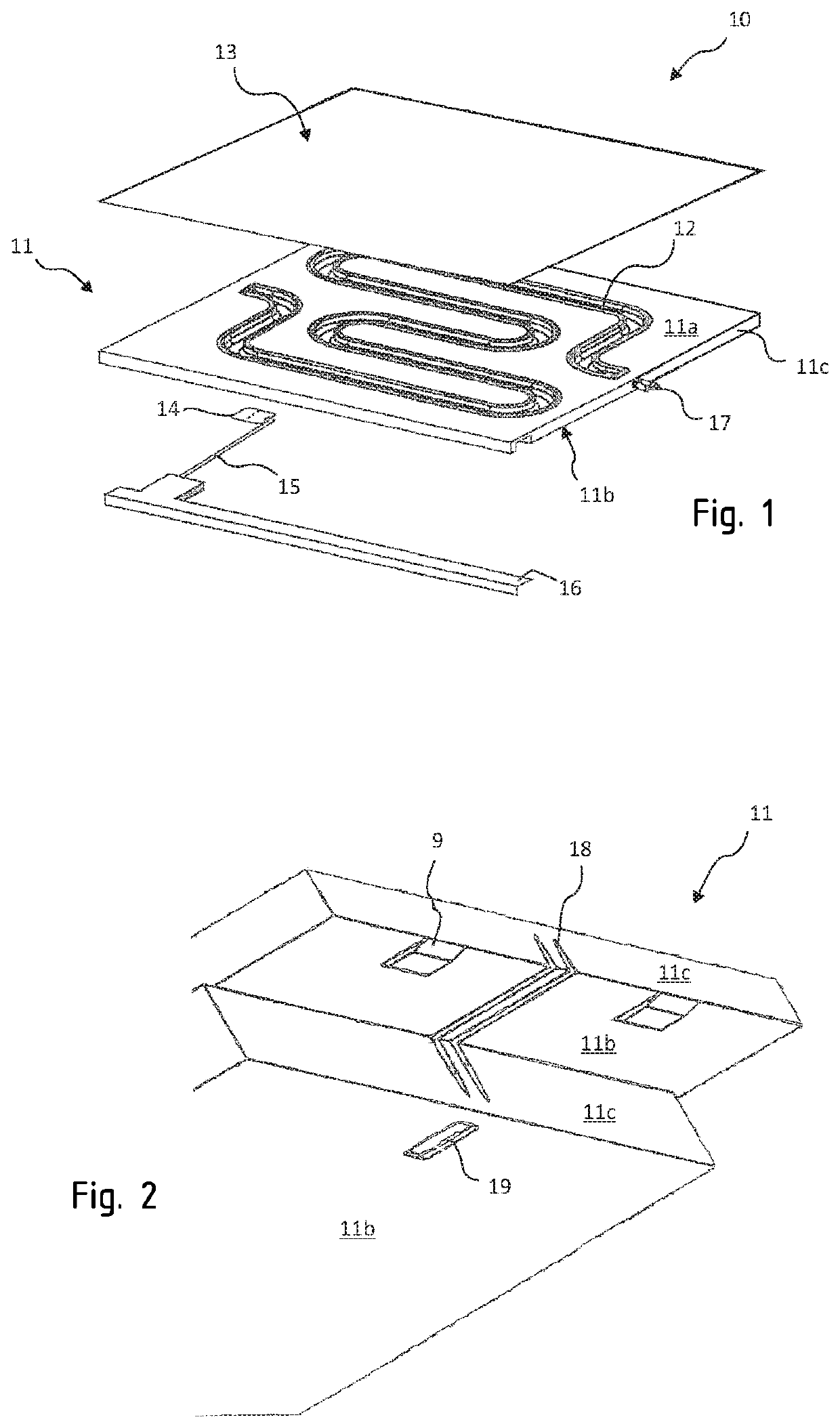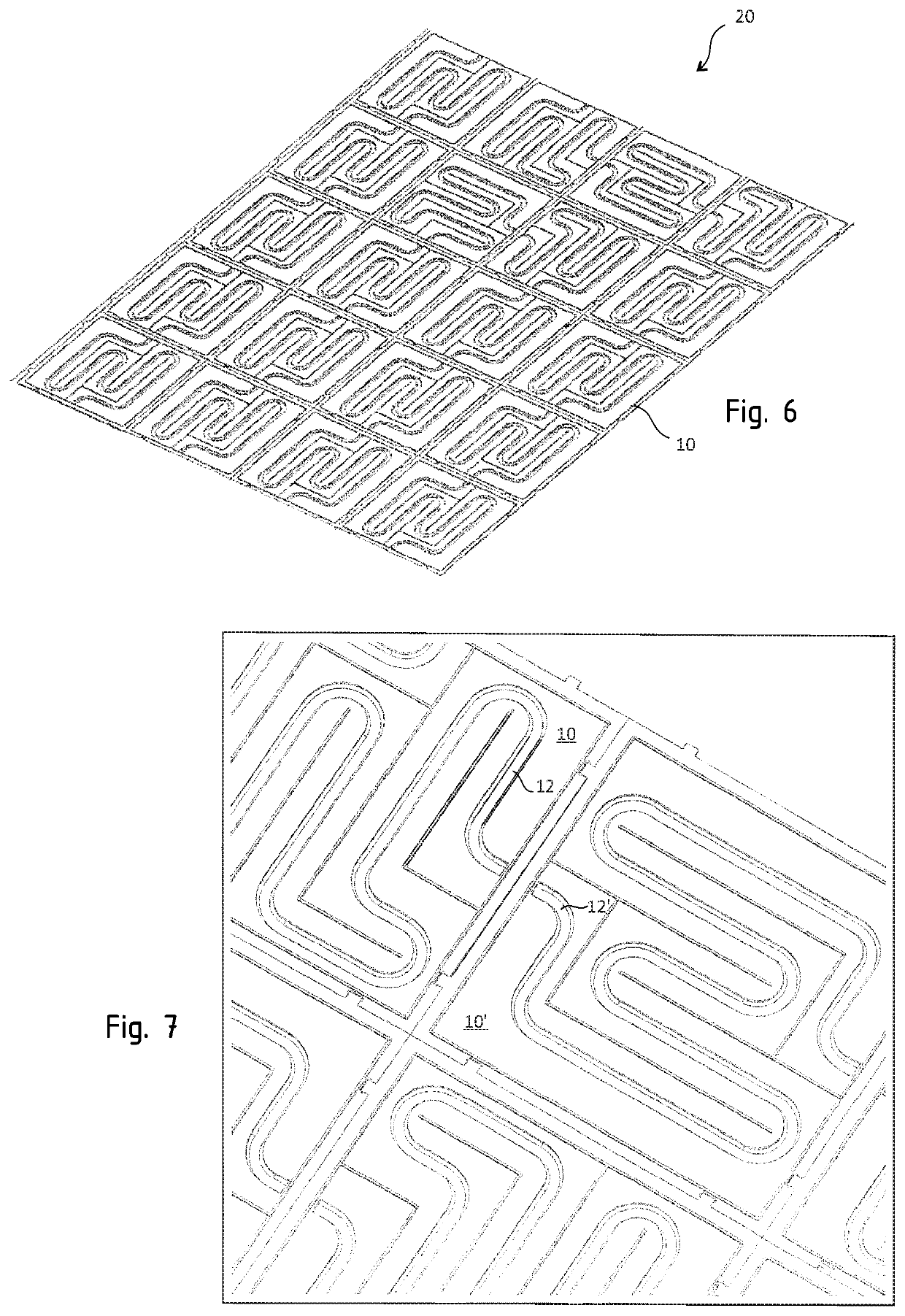Building panel intended for creating heating and/or cooling walls of buildings
a building panel and building technology, applied in sustainable buildings, energy-efficient heating/cooling, heating types, etc., can solve the problems of large construction work, inconvenient building construction, and need to call on a specialized company to install such circuits, and achieve easy replacement of defective panels or panels, quick and simplified installation, and greatly simplified leak repair
- Summary
- Abstract
- Description
- Claims
- Application Information
AI Technical Summary
Benefits of technology
Problems solved by technology
Method used
Image
Examples
Embodiment Construction
[0033]With reference to FIG. 1, a building panel according to the present invention is shown. This building panel comprises in particular a base element 11 in the form of a substantially rectangular plate of a certain thickness, said plate being defined by its upper face 11a, its lower face 11b and its four lateral faces 11c. The base element 11 will preferably be formed by molding an insulating and flame retardant thermoplastic resin. During the formation of the base element 11, channels 12 have been made at the upper surface 11a, said channels being configured to allow the circulation of a heat-carrying fluid or coolant through the panel. The channels 12 will advantageously be arranged so as to at least partially cover the surface of the base element, thus allowing a homogeneous distribution of heat or cold through the panel. Thus, in one of the possible arrangements shown in FIG. 1, the channels 12 define a coil shape.
[0034]The panel also comprises a conductive element 13 in the ...
PUM
 Login to View More
Login to View More Abstract
Description
Claims
Application Information
 Login to View More
Login to View More - R&D
- Intellectual Property
- Life Sciences
- Materials
- Tech Scout
- Unparalleled Data Quality
- Higher Quality Content
- 60% Fewer Hallucinations
Browse by: Latest US Patents, China's latest patents, Technical Efficacy Thesaurus, Application Domain, Technology Topic, Popular Technical Reports.
© 2025 PatSnap. All rights reserved.Legal|Privacy policy|Modern Slavery Act Transparency Statement|Sitemap|About US| Contact US: help@patsnap.com



